- It is paradoxical that the word “hospital” is within the work “hospitality” as both are derived from the Latin root meaning “friendly reception to a guest or stranger.”
- Hospital administrators do not see their facility as a place of comfort but rather a place of disease and sickness.
- Hospital managers want patients that accept just being in a hospital means you will be uncomfortable.
Nothing in my life or education prepared me for the bedlam that exists behind the bricks and mortar of a hospital or ER department. Hospital administrators and healthcare personnel have the opportunity (and perhaps the obligation) to turn these horrific environments into spaces that encourage wellness and good health and not add to the stress and fear of being ill. Hotels provide the prototype and roadmap for making meaningful changes in an otherwise horrific environment.
If you have been a patient in a New York hospital or spent time in a New York Emergency room, you know that the absence of a positive hotel employee attitude, hotel amenities, hotel spaces, and hotel cleanliness produces a heightened level of anxiety that leads to ongoing fears. Perhaps this occurs (at least in some New York hospitals) because hospital administrators do not see their facility as a place of comfort but rather a place of disease and sickness; healing and wellness can be done at home, at the spa, or the Four Seasons.
Ask any hospital manager to explain his/her working environment and the response is likely to be that they need vitals, and data, and better alarms and patients that understand that all pain cannot be stopped and an acceptance that just being in a hospital means you will be uncomfortable and the future will be unpredictable. Ask the same question from a hotel executive and the response is likely to state, “To be the most hospitable company in the world – by creating heartfelt experiences for Guests, meaningful opportunities for Team Members, high value for Owners and a positive impact in our Communities” ( https://notesmatic.com/mission-and-vision-of-hilton-worldwide-an-analysis/ ).
It is paradoxical that the word “hospital” is within the word “hospitality,” as both are derived from the Latin root meaning “friendly reception to a guest or stranger.”
It is obvious that both hotels and hospitals have common core characteristics:
1. Serve demanding and increasingly well-informed clients
2. Employ a large hierarchy of workers with varying levels of responsibility
3. Payments are increasingly tied to guest/patient evaluations
While hotels are cognizant of their relationship to the public and heed market research that has led to improvements and innovation with the objective of improving customer satisfaction, hospitals have ignored the reality that their primary function is to turn a sick patient into a well-person and not to increase bottom-line profitability. Because of their misguided mission, there has been little (if any) cross-fertilization between the hotel and hospital industries.
Patient Satisfaction Studies
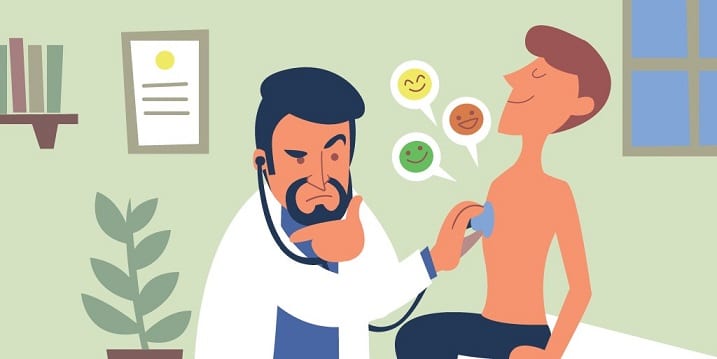
Changes in the healthcare system are forcing hospitals to become more concerned with patient approval and patient satisfaction is being monitored by Hospital Consumer Assessment of Health Care Providers and Systems 2010 (HCAHPSA) and Press Ganey surveys.
HCAHPS survey is the first national, standardized, and publicly reported survey of patient’s perspectives of hospital care. It questions issues that include communication with nurses and doctors, the responsiveness of hospital staff, cleanliness and quietness of the hospital, pain management, communication about medicines, and discharge planning. This research has become one of the measures used to calculate value-based incentive payments in the Hospital Value-Based Purchasing Program. Beyond reimbursement, patient satisfaction may also be a marker of clinical quality.
Press Ganey surveys strengthen patient-provider relationships with comprehensive surveys and rounding approaches that enable real-time feedback and performance benchmarks.
The hotel industry has always been cognizant of guest satisfaction as a goal. At an absolute minimum, the guest should be “satisfied;” however, exceeding their expectations is the goal. The industry has devoted decades of effort and resources toward improving products and management structures in order to remain competitive.
Hospitals could leverage these lessons by adopting and adapting hotel practices that can lead to significant improvements in patient approval and satisfaction, ultimately benefitting hospital management staff, physicians, employees, patients, and bottom-line profitability.
Similarities and Differences
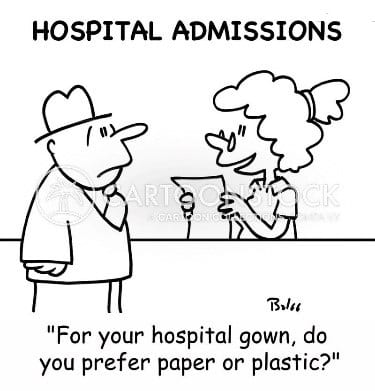
Hospitals and hotels focus on guests/patients who obtain lodging and services. Just as there is a wide variation in hotel accommodations (from Holiday Inn Express to Four Seasons hotels) there is a huge range in the size of hospitals as well as ambiance and quality. Both employ a large hierarchy of workers with varying levels of responsibility. Hospitals and hotels create an experience for their customers/patients with associated emotions.
Differences
Hotels are paid directly out-of-pocket by customers while hospitals are usually paid through intermediary insurance companies. In a hospital, customers are patients, typically anxious and apprehensive about their impending treatment. Patients may have a choice as to which facility they seek care; however, on many occasions, there is no choice as most patients have a medical emergency and they must be at a hospital. At a hotel, customers are guests, typically excited (if for leisure) about their visit. In most cases, guests choose their hotel and the timing of their stay. From the very beginning, hospitals are at a disadvantage – therefore they should do more than a hotel to ensure patients’ comfort. The foremost priority of hospitals is, and always should be, to improve patient health, but patient comfort and wellbeing should not be neglected along the way.
Doctors face many challenges in providing their patients with the highest level of satisfaction although many physicians never see their patients when they are in the ER or in a bed at a hospital (at least in the two New York hospitals I experienced) thereby escalating an already unpleasant experience into one with increased anxiety.
Roles and Responsibilities
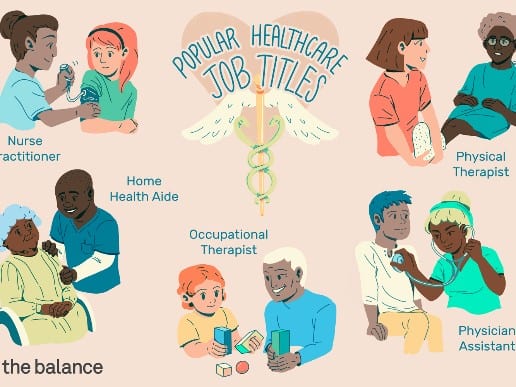
The array of healthcare professionals can be daunting to patients (i.e., resident, physician assistants, nurse practitioners, and others with varying degrees of experience) who pop in and out of the patient’s space – never quite explaining who they are, their jobs, responsibilities or their role in improving the quality of the patient experience and rarely returning with feedback or any new information. In a hotel, workers have clearly defined roles (front desk, concierge, room attendant, waiter); in a hospital, however, the various members of the medical team may be foreign to a patient. Some hospitals have implemented face cards (card with photos, training and interests are handed to each patient) and they have improved patient knowledge of the names and roles their hospital physicians and team members with whom they interact.
PATIENT SYSTEMS AND PROCEDURES
Preadmission
Before admission, patients undergo laboratory tests, receive questionnaires about their current medical state – all contributing to mounting apprehension and discomfort. To minimize this anxiety, it would be helpful if hospitals provided patients with information, so they know what to expect.
Check-in Process
Hotel employees know that the first 15-minute guest experience is critical as they set the tone of the visit. They know the expected arrival time of the guest, have reviewed the guest’s profile and photograph and when the guest arrives, they are able to greet the person(s) with a warm “We’ve been expecting you.”
In stark contrast, hospitals are likely to know less about a new arrival (unless they have been patients with the hospital in the past and the information is in the database). Regardless of previous association, the hospital requires the “customer” to sign in multiple times at multiple stations, frequently wait hours in the admissions area, and typically receive patients with, “Name, photo ID, insurance cards, please.”
With the amount of information hospitals have about their patients and their waiting times, room availability and physician availability, much could be done to improve this check-in process. Redundant information gathering could be minimized, existing patient photographs could be utilized to recognize the patient and waiting time could be reduced by both streamlining the admissions process and ensuring availability of rooms at scheduled patient arrival times.
Administrators must do a better job of explaining to patients why they are asked the same information time and again (i.e., in order to confirm their identity and ensure their safety) or use technology to eliminate the redundancy.
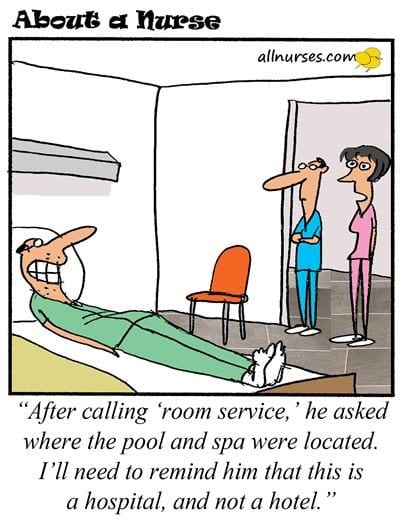
A critical aspect of a patient’s hospital experience is their physician. In the two New York hospitals, I had the misfortune to experience, actually seeing a doctor for more than a nano-second is extraordinary and having a meaningful dialogue with a physician feels like winning the lottery. Patients are equally fortunate if they are able to have multiple face-to-face communications with their assigned nurse.
Even in a technically driven field studies show that physician ratings are directly correlated with communication skills, including showing respect, listening carefully, giving easy-to-understand instructions, spending enough time with the patient, and explaining tests and forecasts of planned treatment/tests. A gesture as simple as the physician sitting down instead of standing at the bedside has been shown to make a difference. Improved physician-patient communication has also been linked to better patient outcomes.
Physicians and healthcare professionals should be trained to AIDET as it provides solid, generalized guidelines for improving patient interactions emphasizing basic tenets of good customer service. It is designed to decrease patient anxiety, increase patient compliance and improve clinical outcomes.
1. Acknowledge (how does the patient want to be addressed)
2. Introduce (who you/we are with appropriate background)
3. Duration (of meeting, procedure, stay)
4. Explanation (in simplest terms)
5. Thank you (an honor to be of service/help)
In addition: Doctors and his/her team should:
a) Sit down (patients think you spend 40 percent more time with them and appreciate the visit more)
b) Management up (talk about the strengths and background of team/staff/institution)
c) Listen (ask and then let the patients talk for 1-2 minutes with nodding to acknowledge).
The patient’s “in-house experience” is dependent not only on his/her interactions with the physician but also on the entire hospital team consisting of nurses, medical assistants, therapists, transport personnel, food service staff, and technicians.
Studies show that higher nurse-to-patient ratios and good nursing communications have a positive impact on patient satisfaction. All hospital staff must be included in measures to improve the quality of the patient experience. Many patient surveys directly address these facets of their stay and link reimbursement to the performance of custodians, transport staff, and nurses.
Discharge Planning and Follow-up
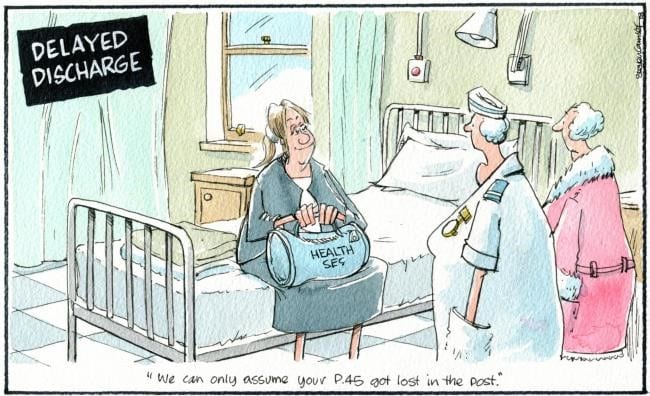
Preparing to leave the hospital is an important consideration. In some hospitals, a nurse reviews discharge instructions and a transport staff member wheels the patient to the lobby. In other hospitals, limousines meet the patient at the exit and bring them directly to their homes.
I was unfortunate and did not experience a “planned” discharge at NYU Langone. I was informed 45 minutes in advance of my discharge (the planned release was one day later). I was not permitted time to take a shower, was encouraged to dress quickly, and although I had not been out of bed for days, was forced to walk from the room, to the elevator, through the large and confusing lobby in order to hail a taxi and get home. The protocol – was – get out of here we need your bed!
Patients should have scheduled follow-up appointments before being discharged; however, this is a frequently ignored responsibility increasing the stress level of the patient as he/she transitions home. When I was tossed out of NYU Langone, I had no follow-up appointments arranged, although I would have appreciated a prescription for physical therapy since I had not been out of a bed for very long periods of time and found walking a challenge.
In addition to scheduled follow-up appointments, the communication information should include when and whom to contact should emergencies/ issues arise at home and tasks to be completed (i.e., meds to take, diets to follow).
If the patient is unable to care for themselves, support staff should be made available to them while they are still in the hospital. Allowing patients to return home without healthcare/support aids can be dangerous and borders on being unethical. This step should be arranged in consultant with a hospital social worker and the patient.
Post-Stay Experience
After leaving the hospital patients should receive a survey regarding their hospital experience. While in the hospital they should be informed that the survey will help the hospital and future patients. People responding with negative experiences should be contacted by a member of the healthcare team and when possible, correct the error. Hospital administrators should also check online social media, as well as Yelp and Facebook for patient comments as studies, show that patient ratings and word-of-mouth narratives can significantly influence the choice(s) made by patients.
At NYU Langone I went through an “exit interview,” with “patient/hospital liaison who inquired about my hospital experience. I shared all of my observations along with recommendations for improvement. Her response, “Send your comments to the hospital CEO. He will be interested in reading your letter.” (Note: my published reports have been forwarded to hospital administrators and there has been absolutely no follow-up). I did receive one follow-up call from an ER nurse who inquired about my condition. When I reported that I was not feeling well and needed assistance and/or additional information I was told that his job (and the job of the ER department) was not to provide medical analysis or remedies but to stabilize the patient and send him home.
Oops. Something is Wrong
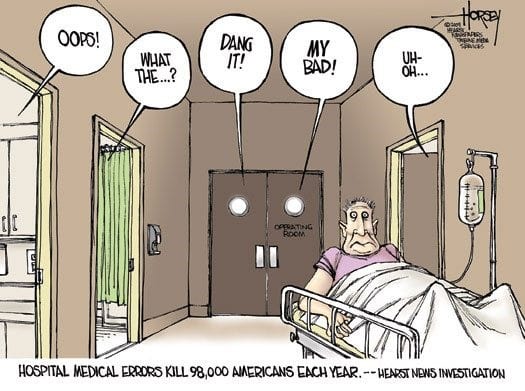
Despite the best efforts of everyone, things can and do go sideways. Hotels have proactive mechanisms in place to identify guest dissatisfaction. If there is a room or food problem, a staff member addresses the issue and when necessary, engages a department manager or the general manager. If the issues cannot be resolved to the satisfaction of the guest, he/she may be offered a refund or a credit as well as an apology by the senior staff members. Guests are frequently surprised and delighted by the attention and it converts an unhappy guest into a loyal customer.
In hospitals, money cannot be refunded or credits offered; however, time should be spent in identifying patient dissatisfaction. Patients’ “satisfaction pulse” should be checked daily and immediately addressed when a problem/issue is identified. Good communication is especially important in the case of unexpected complications or errors, as inappropriate management of the situation could lead to a lawsuit or worse. If a patient is dissatisfied, the opportunity to correct their impression of the hospital disappears when the patient leaves. Fixing a bad experience can leave a person with an even better experience than never having had a problem in the first place.
Many hotels use daily reports to track in-house guests’ satisfaction. Documentation is made in a guest’s electronic portfolio every time something positive or negative is said or experienced. Negative experiences get recovered before the guest checks out as no guest should leave unhappy, ever. “Fine” is never accepted as an answer. If the guest is not RAVING about the visit the hotel assumes it was not perfect and the GM will come to personally talk to the guest.
Connection: Patient, Staff, Productivity
Hospitals and hotels are only as good as their weakest customer contact employee. A patient’s hospital experience is only as good as his/her worst interaction and it does not matter if it was a busy overworked resident or a medical assistant who did not help them to the bathroom quickly enough. Employees, not managers, are the most capable of influencing the customer experience. A primary goal should be to serve hospital employees well, as that patients will be well served in turn. At a hotel, this emphasis comes from the top down and managers work to recruit and retain the best people who are proud and happy of the place they work.
From Hospital to Hospitality

Hospital administrators should:
1. Work hard to improve the first 15 minutes of the patient’s experience
2. Stress the importance of enhanced communication with patients throughout their hospital stay
3. Track patient’s level of satisfaction on an ongoing basis and intervene as soon as possible when problems arise
4. Follow up with patients after they are discharged from the hospital to obtain feedback that can be used to improve future performance.
5. Be aware of online presence for “reputation management” as patients will read about the hospital before coming to the facility and then write about their experience afterward
6. Management should aim to create an environment where all hospital employees are happy and productive, they can take the best care of their patients.
A Future for Hospitals?
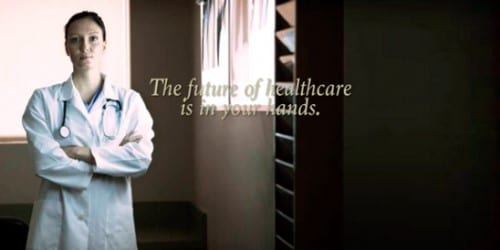
Some research suggests that hospitals are not going to survive in their current format. The US medical system has become increasingly expensive and can be dangerous to one’s health. According to Dr. Dan Paul (Colorado Springs), the current US healthcare industry is terrible for patients and doctors. He finds that “Hospitals are using an old business model.”
It is interesting to note that two-thirds of all Americans who declare bankruptcy have cited medical reasons. In 2018, a third of the $2.6 trillion spent on healthcare went to hospitals, while 20 percent went to physicians and clinics (Kaiser Family Foundation). John Hopkins Medicine reporter in 2016 that more than 250,000 people in the US die each year from medical errors, making those mistakes the third-leading cause of death behind heart disease and cancer.
How likely will it take for the current hospital model to be recognized as the dinosaur that it is? When will the healthcare system transform itself into something that actually meets (and exceeds) the needs and wants of the patient? Anyone willing to take a guess? My crystal ball is currently on life-support and not available for consults.
WHAT TO TAKE AWAY FROM THIS ARTICLE:
- Ask any hospital manager to explain his/her working environment and the response is likely to be that they need vitals, and data, and better alarms and patients that understand that all pain cannot be stopped and an acceptance that just being in a hospital means you will be uncomfortable and the future will be unpredictable.
- If you have been a patient in a New York hospital or spent time in a New York Emergency room, you know that the absence of a positive hotel employee attitude, hotel amenities, hotel spaces, and hotel cleanliness produces a heightened level of anxiety that leads to ongoing fears.
- While hotels are cognizant of their relationship to the public and heed market research that has led to improvements and innovation with the objective of improving customer satisfaction, hospitals have ignored the reality that their primary function is to turn a sick patient into a well-person and not to increase bottom-line profitability.























